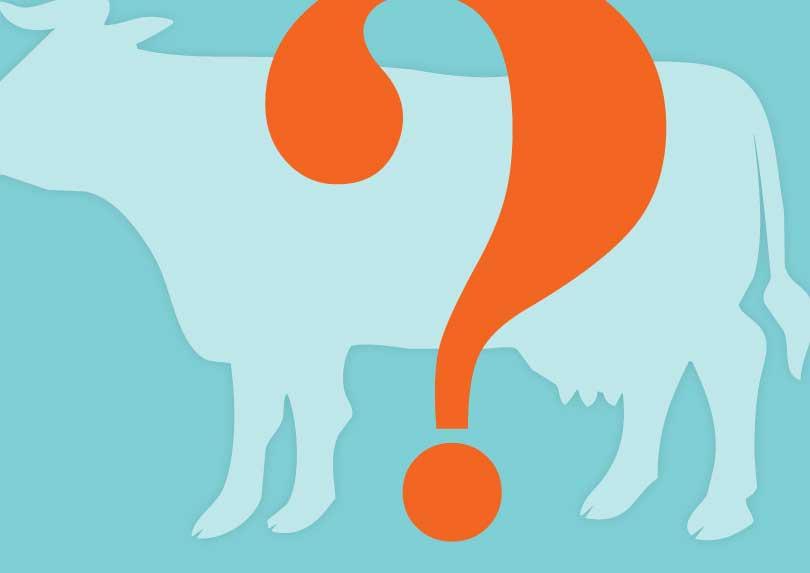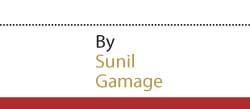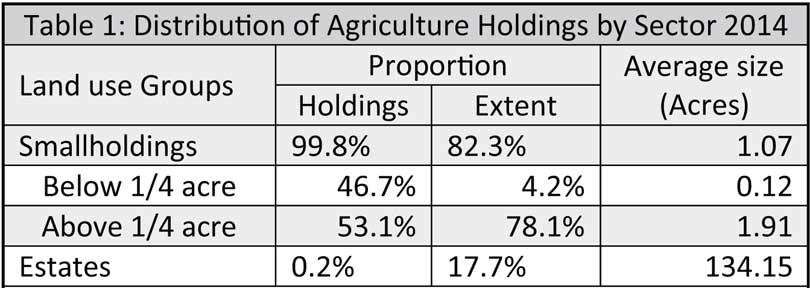
 Is self-sufficiency possible in milk supply? Not in my lifetime and maybe not yours too, but if…...? Yes, there is a big‘if’. Sometimes, I wonder whether the past governments were really serious in spending massive amounts of money for dairy development. Why I say that is in most Cabinets the livestock sector was not even placed under the Ministry of Agriculture, but in some unknown Ministry. It can be absurdly placed even in the Ministry of Justice. I am not joking; it can be that bad. The internationally accepted norm in smallholder agriculture is that crop and livestock to be considered as two interlinked areas. However, in Sri Lanka, livestock is assumed by the policy makers, politicians and bureaucrats as livestock and is not a part of agriculture. Therefore, livestock can be placed even in the Ministry of Ports and Shipping. This arrangement is only good for politicians and the bureaucrats, not for the farmers, as our farmers are mostly smallholders.
Is self-sufficiency possible in milk supply? Not in my lifetime and maybe not yours too, but if…...? Yes, there is a big‘if’. Sometimes, I wonder whether the past governments were really serious in spending massive amounts of money for dairy development. Why I say that is in most Cabinets the livestock sector was not even placed under the Ministry of Agriculture, but in some unknown Ministry. It can be absurdly placed even in the Ministry of Justice. I am not joking; it can be that bad. The internationally accepted norm in smallholder agriculture is that crop and livestock to be considered as two interlinked areas. However, in Sri Lanka, livestock is assumed by the policy makers, politicians and bureaucrats as livestock and is not a part of agriculture. Therefore, livestock can be placed even in the Ministry of Ports and Shipping. This arrangement is only good for politicians and the bureaucrats, not for the farmers, as our farmers are mostly smallholders.
Distribution of Agriculture Holdings by Sector 2014
- Land use Groups Proportion Average size (Acres)
- Holdings Extent
- Smallholdings 99.8% 82.3% 1.07
- Below 1/4 acre 46.7% 4.2% 0.12
- Above 1/4 acre 53.1% 78.1% 1.91
- Estates 0.2% 17.7% 134.15
- Department of Census and Statistics Table 3.2.1 page 29
In this type of smallholder agriculture, it is incorrect to focus our development programmes based on economies of scale. Our ancient farmers knew the value of economies of scope or multi-functionality that is environment friendly and resistant to climate vagaries. Crop agriculture sustainability is at stake today, rural youth bypass this vocation (agriculture) and their rural location in lieu of seemingly more lucrative prospects in urban areas. Then, for those still in farming it has become only a part-time activity. As this discussion is only on milk production a mono-functional agriculture does not support a rapid growth in milk production. Table 2 below shows there is a gap between the local supply and imports, and demand is widening. The current annual growth is 3.33% and the required growth is 46.6%.However, the imports are growing at the rate of 8.5%.
- Widening gap between milk imports and local milk production
- Crop agriculture sustainability is at stake today
The gap between growth in local milk supply and Imports
- Supply 1989 2018 30 Years Annual Growth 2023 milk
- Local(%) 20% 40% 100% 3.33% Required annual growth is 46.6%
- Import M. tons 29,000 146,978 262% 13.56%
- Per Capita ml/Day 45 160 287% 8.51% 240 ml/day
- Keeping imports constant, the required five year growth in local milk supply 233%
There are around 1,400,000 farmers in Sri Lanka out of which only about 360,000 (25%) are smallholder Crop-Dairy integrated farmers. These numbers were much higher till late 1970s. These changes occurred after this new concept of Mono-functional agricultural system which was adopted in late 1970s. Mono-functional agriculture is basically from large countries, those focusing on economy of scale. In Sri Lanka around 95% of the farmers have land areas below 3 hectares. Hence, this effort will now focus on “sustainable intensification” of smallholder agriculture (integrated with the dairy sector) possible in a way that preserves the environment and provides income and food sufficient to meet the needs of the people with impending climate change issues.

Furthermore, crop farmers and crop farm laborers work only for about 200 days during the paddy and crop cultivation periods in Maha and Yala seasons. All the income is derived during the harvesting of these crops at the end of the season. Rest of the period or during the 100 days most farmers and farm labor received no income from crop cultivation but from rearing livestock.
Therefore, integrating livestock in the crop farms is much more important than increasing the local milk or egg supply. Now with only crop farming the farmers are engaged in other income earning activities. Therefore, crop farming is gradually becoming a part time activity. This can be a dangerous precedence and will not be able to attract young people in future.
I repeat, for the continuation of crop farming and the wellbeing of our farmers is much more important than increasing the supply of local milk. Hence, with multi functionality in agriculture or integrated crop-dairy farming, we can enhance the wellbeing of our 1.4 m farmers. They will continue to produce much needed crop food under whatever difficult conditions they undergo. Subsequently, milk is the spinoff of this activity. This is a new perspective, but became a reality during 2016–17 drought period.
(https://www.researchgate.net/publication/316701855).
This article on one hand hopes to provide sufficient information to politicians if they care to read this, on the other to the policy makers whom I assume, plan development activities. I can give a good example of this divide. In “HELA BOJUN”, a very good concept introduced by the former Director General of the Department of Agriculture, you can get a hopper but not an egg hopper because eggs belong to another department.
I am lucky my mother worked for the Department of Agriculture before it was separated into hoppers and eggs, otherwise I would have got only hoppers. This boils down to a ridiculous level but economically affects our country and the farmer. This discussion will be followed by another on how to increase the number of crop – dairy integrated farmers and thus will result in increased milk production.
(The writer is a Retired Deputy Director – Veterinary Research- and a Former National Consultant FAO, Livestock Specialist JICA)

 Is self-sufficiency possible in milk supply? Not in my lifetime and maybe not yours too, but if…...? Yes, there is a big‘if’. Sometimes, I wonder whether the past governments were really serious in spending massive amounts of money for dairy development. Why I say that is in most Cabinets the livestock sector was not even placed under the Ministry of Agriculture, but in some unknown Ministry. It can be absurdly placed even in the Ministry of Justice. I am not joking; it can be that bad. The internationally accepted norm in smallholder agriculture is that crop and livestock to be considered as two interlinked areas. However, in Sri Lanka, livestock is assumed by the policy makers, politicians and bureaucrats as livestock and is not a part of agriculture. Therefore, livestock can be placed even in the Ministry of Ports and Shipping. This arrangement is only good for politicians and the bureaucrats, not for the farmers, as our farmers are mostly smallholders.
Is self-sufficiency possible in milk supply? Not in my lifetime and maybe not yours too, but if…...? Yes, there is a big‘if’. Sometimes, I wonder whether the past governments were really serious in spending massive amounts of money for dairy development. Why I say that is in most Cabinets the livestock sector was not even placed under the Ministry of Agriculture, but in some unknown Ministry. It can be absurdly placed even in the Ministry of Justice. I am not joking; it can be that bad. The internationally accepted norm in smallholder agriculture is that crop and livestock to be considered as two interlinked areas. However, in Sri Lanka, livestock is assumed by the policy makers, politicians and bureaucrats as livestock and is not a part of agriculture. Therefore, livestock can be placed even in the Ministry of Ports and Shipping. This arrangement is only good for politicians and the bureaucrats, not for the farmers, as our farmers are mostly smallholders. 
